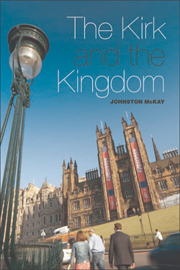3 - The Church and Housing
Rovert Flint's Social Theology put into Practice
Published online by Cambridge University Press: 05 August 2013
Summary
If we are entering on this battle against the evils of society for the object merely of getting our Churches filled and our Church statistics run up … we will fail, and deservedly fail.
Donald Macleod, 1889In 1888, six million people visited an exhibition of science and art, held in Glasgow between May and November, opened by the Prince and Princess of Wales and twice visited by Queen Victoria. The exhibition, which occupied sixty-four acres of land in the city's West End, was held for two main reasons: to emphasise Glasgow's imperial status and municipal achievements, and to raise money for an art gallery and museum to house the city's considerable collections. In conjunction with the exhibition, the city also hosted meetings of the British Medical Association, the British Archaeological Association, the Library Association and the Institute of Naval Architects. In the same year as the exhibition, the Church of Scotland's Presbytery of Glasgow set up a Housing Commission to investigate living conditions in the slum properties of which the six million visitors to the showcase exhibition doubtless saw little. Conditions in some areas of Glasgow were appalling. Very little light made its way into the houses. Walls were damp, roofs leaked, staircases and passages were dilapidated, ventilation was utterly inadequate and the air was rancid from inefficient drains. Families lived and slept in one room and siblings slept with parents.
- Type
- Chapter
- Information
- The Kirk and the KingdomA Century of Tension in Scottish Social Theology 1830-1929, pp. 43 - 64Publisher: Edinburgh University PressPrint publication year: 2011



